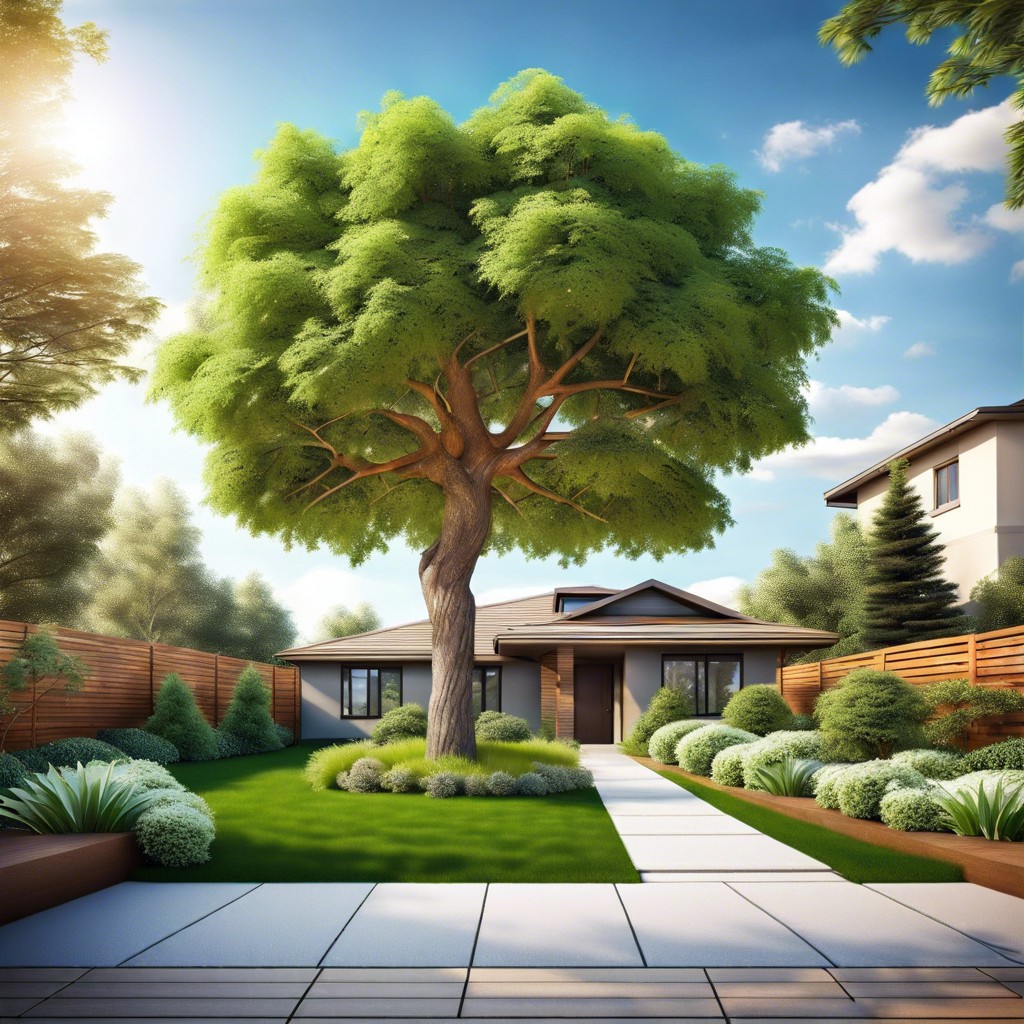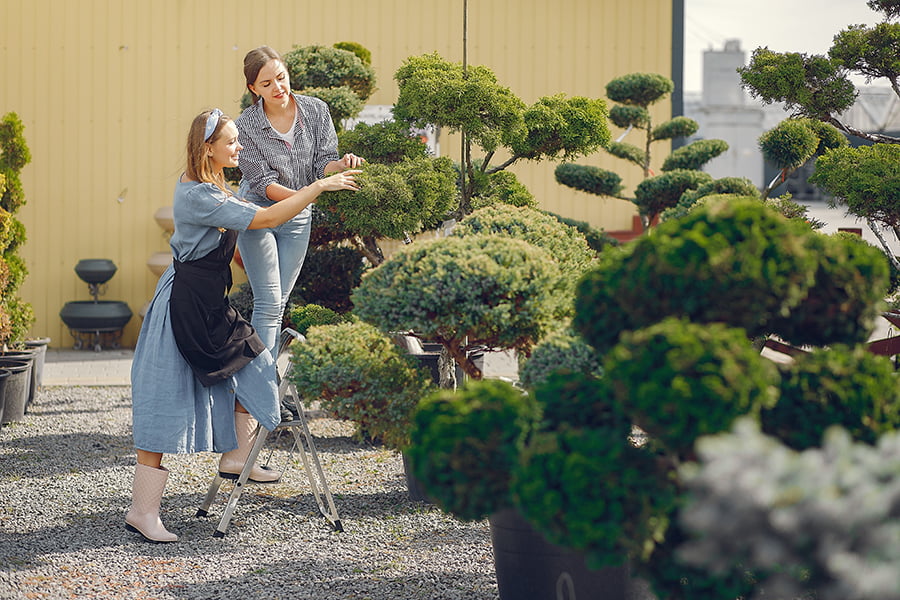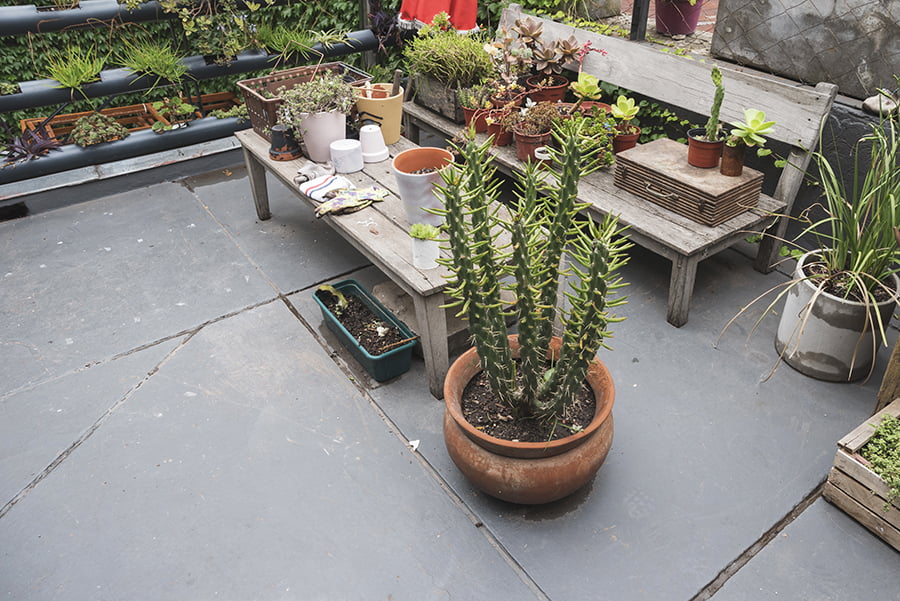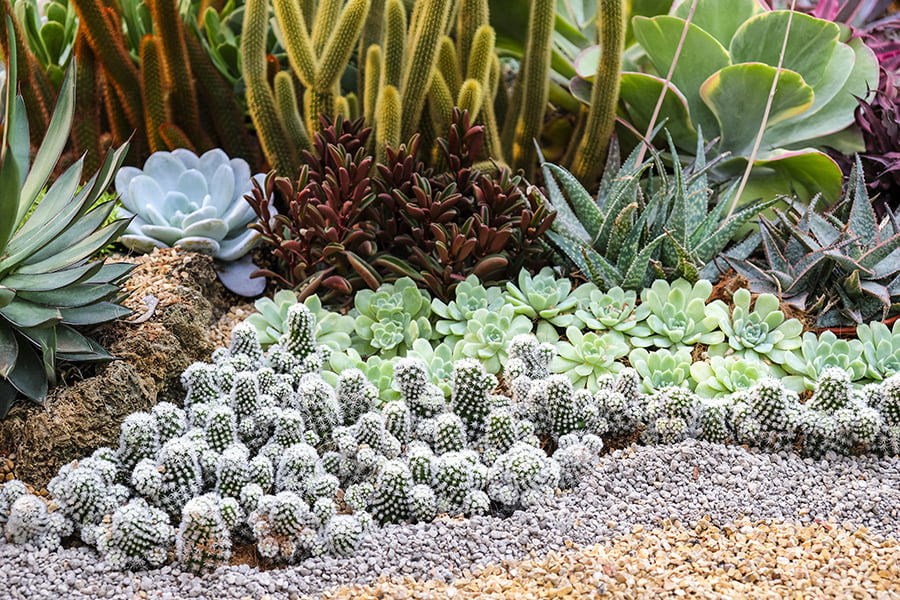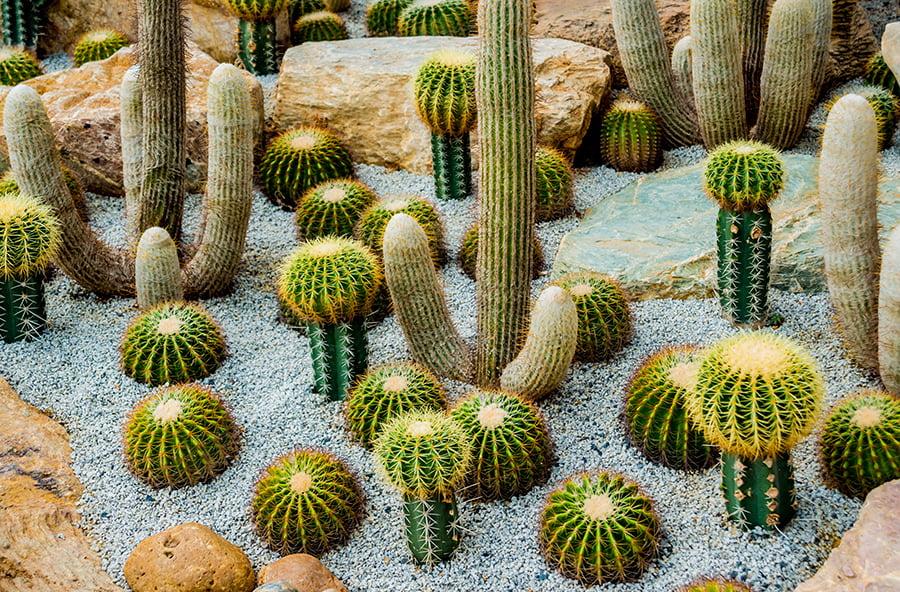Welcome to a visual guide on landscaping beneath trees, where we’ll show you how the right plants and designs can transform these shaded spaces into captivating garden highlights.
Key takeaways:
- Select plants that can thrive in the shade of trees.
- Understand the soil and moisture conditions under trees.
- Choose the right type of mulch for tree surrounds.
- Incorporate perennial ground covers for color and texture.
- Design pathways that protect tree roots and add charm to the garden.
Selecting Appropriately Sized Plants for Under-Tree Landscaping
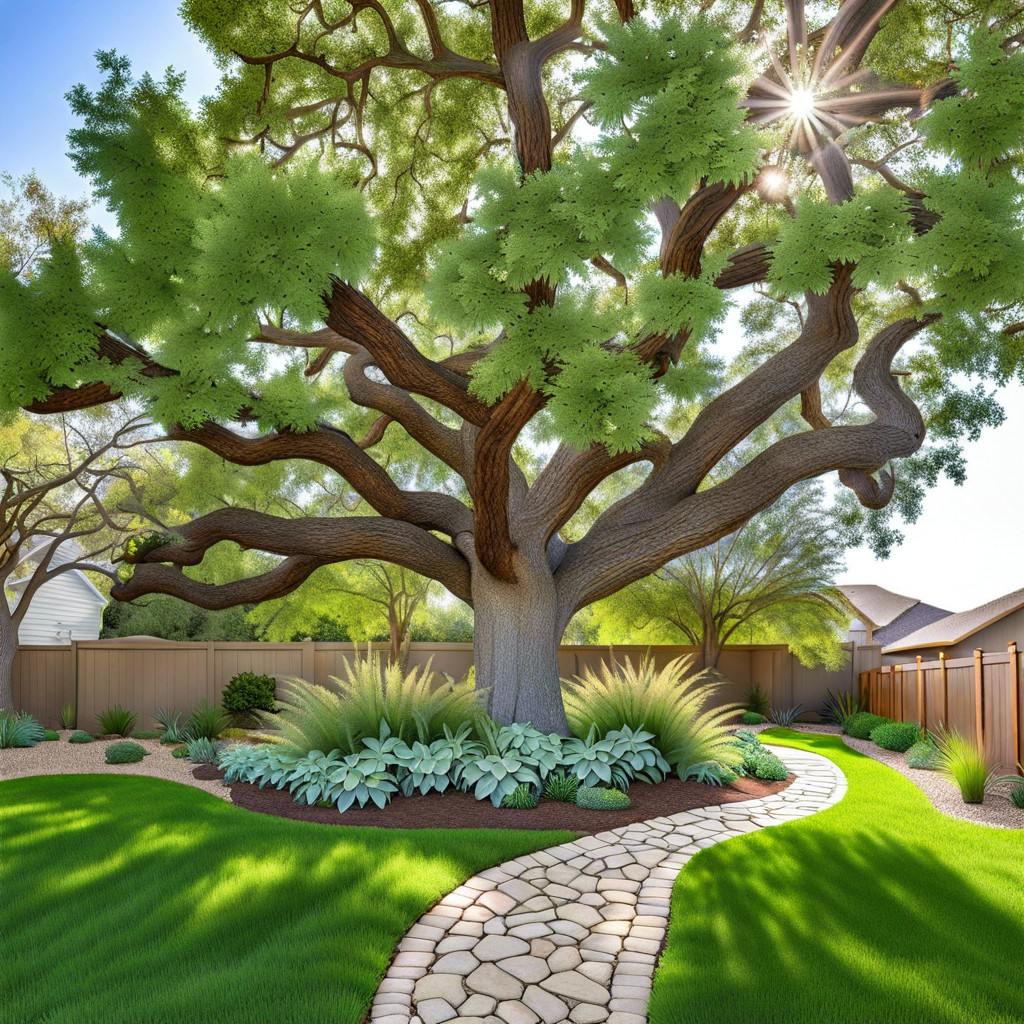
Alright, let’s dig our fingers into the dirt and talk about choosing plants that play nice with the gentle giants in your garden. Consider this: mature trees cast a stately shade, but beneath them is a special zone – a bit like a secret garden club where not just any plant can strut in. If you’re eyeing up a leafy fern or a dainty hosta, you’re on the right track.
You’ll want to pick plants that are comfortable in the tree’s shadow, ones that don’t mind stretching their legs in limited sunlight. Ground-hugging types like periwinkle or sweet woodruff are excellent confidants for your trees. These low-growers won’t try to steal the spotlight and are content to fill the spaces with lush, green elegance.
Oh, and let’s not forget the character actors of the plant world. These are your small shrubs and dwarf hydrangeas that add a dash of drama without getting too big for their britches. They understand the assignment – give a little oomph without outgrowing their stage.
Remember, this is their stage, under the sprawling arms of your tree, so let’s give a round of applause for the plants that know how to play supporting roles to those towering troupes of bark and leaf. Keep these tips in your gardening toolkit, and you’ll have an under-tree scene that’ll make both the trees and the petite plants feel right at home.
Understanding Soil and Moisture Conditions Around Trees
Crafting a lush oasis under the canopy of a tree starts with a little dirt detective work. Think of soil as the unsung hero that feeds your garden’s success. To kick off, grab a handful and feel its texture. If it’s gritty, you’ve hit sand; sticky, and it’s clay; smooth and you’re in loam territory – the garden gold standard.
Getting down to the root of moisture levels is next. Your tree has been slurping up the water long before your plants have had a sip. This means you should select thirst-tolerant companions that won’t compete too aggressively with your tree’s established thirst quenchers.
The canopy overhead isn’t just for show – it’s a rain shield. Plants with a knack for drought will thrive here, high-fiving every drop that dodges the leafy umbrella.
Dappled light is the name of the game. The light under a tree plays hide and seek, and plants that can handle shade with a touch of sun will be over the moon – think shade-loving heucheras with their colorful leaves, adding a dab of paint to your green tapestry.
To sum it up, match your plants to your soil’s hand and don’t forget that under trees, it’s a parched kind of party. With these tips in your back pocket, you’re one step closer to turning the area under your tree into a scene from a storybook.
Choosing the Right Mulch for Tree Surrounds
Mulch isn’t just a pretty face; it’s like a Swiss Army knife for your garden, serving multiple purposes. First off, it retains moisture, which is a godsend during those scorching summer days. It’s like giving your plants a personal oasis, ensuring they stay hydrated without you running the sprinkler round the clock.
Now, let’s talk about mulch types. Organic options, like shredded bark or wood chips, break down over time, adding a dash of nutrients to the soil – it’s like slow-release fertilizer without lifting a finger. Plus, these natural types settle in nicely and don’t easily wash away during a downpour.
But here’s a nugget of wisdom: steer clear of the “mulch volcano.” Piling it high against the tree trunk invites pests and diseases. Instead, think doughnut, not volcano. A nice, even layer with space around the trunk lets your tree breathe and thrive.
Keep the layer three inches thick, tops. Any more and you might as well hand out snorkels to the roots because they’ll struggle to get air. Remember, moderation is key – like salt on fries, the right amount can make all the difference.
Incorporating Perennial Ground Covers Under Trees
As you consider giving that shaded space a new lease of life, think about embracing the charm of perennial ground covers. These persistent friends can thrive even with the limited sunshine that sneaks past the leafy canopy above. They form a lush undergrowth that adds a splash of color and texture, without annual replanting hassles.
Here’s a pro tip: before you dive in, ensure the chosen perennials don’t just survive but thrive in the shade. Plants like Vinca minor, with its starry blue flowers, or the evergreen Pachysandra, are champions at decorating the ground beneath trees. They settle in happily, asking for little but giving a lot back in visual appeal.
Remember, working around a tree requires a gentle touch to avoid harming its roots. When planting your ground cover, space them enough to afford them room to grow but close enough to eventually knit together into an impressive tapestry. Water them regularly until they’re well-established, and soon you’ll see them take the baton and run with it, creating an almost carefree blanket of greens and colors.
And let’s not sidestep the main perk here: these plants are like a strike team against weeds. Once established, they make it tough for those pesky invaders to gain a foothold. Ground covers truly offer a serene and scenic solution to an otherwise bare and bland spot.
Designing Pathways That Complement Tree Roots
Navigating the delicate dance between aesthetics and the health of tree roots can be a fun challenge for any garden enthusiast! Picture this: winding pathways that not only invite visitors to take a stroll through your shaded oasis but also keep those vital roots out of harm’s way.
Let’s throw in a pro tip – use a light touch when crafting paths close to trees. Steer clear of deep digging, which could potentially damage the root system. Instead, go for surface materials like wood chips or stepping stones that simply rest on the soil. These options are kind to roots and add an unspoken charm to your garden’s atmosphere.
Ever notice how the wild zig and zag of roots on the ground adds character? Mirror that natural pattern when plotting your path. Curves are not just easier on the eyes; they’re also a safer bet for roots, allowing them room to grow without interruption.
And here’s a little secret: roots and water share an unbreakable bond, like peanut butter and jelly. Make sure your path design considers proper drainage to avoid water pooling around the roots, which could spell trouble.
Remember, tree roots are the silent guardians of your towering friends, and designing pathways that respect their space is like giving a tip of the hat to nature’s masterful design. Keep it simple, respect the roots, and your garden paths will shine as an example of harmony between man-made and natural beauty.
